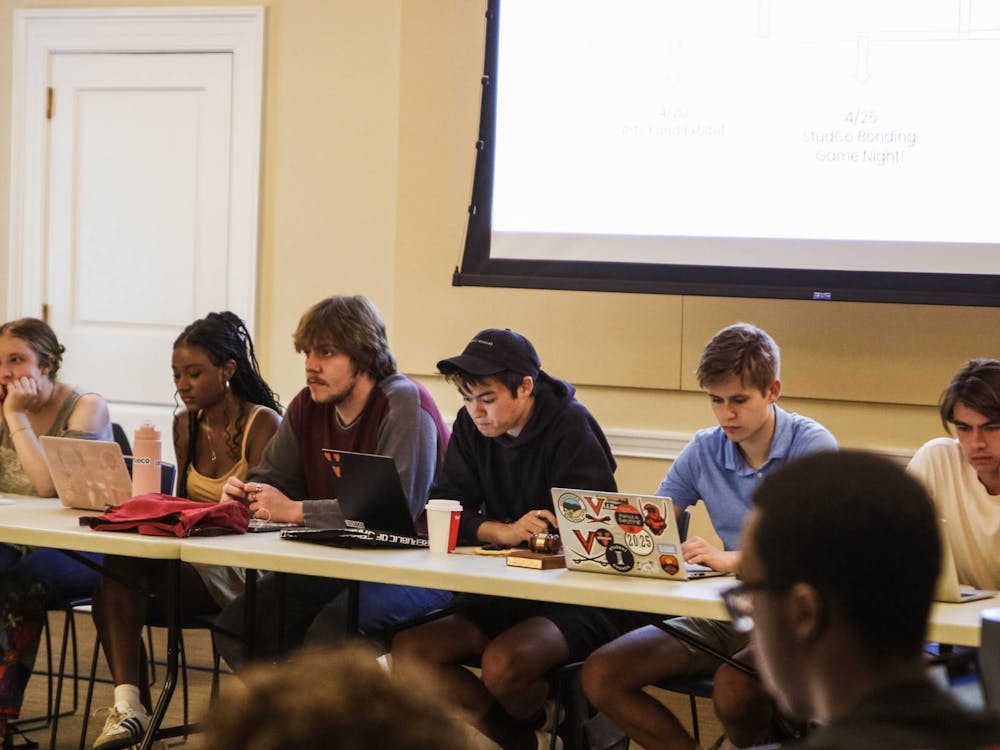Local Virginia activist David Swanson is circulating a petition urging University administration to remove the George Rogers Clark statue from its current location on University property.
The statue, located by the intersection of West Main Street and Jefferson Park Avenue, depicts George Rogers Clark riding horseback, confronting a Native American chief. A group of Native Americans are depicted kneeling in front of Clark, while soldiers brandish weapons behind him. The statue’s inscription reads “George Rogers Clark: Conqueror of the Northwest.”
George Rogers Clark himself was born in Albemarle County, Virginia and was the older brother of the Lewis and Clark Expedition co-leader William Clark. He led militia efforts in the Northwest against the British and Native Americans during the American Revolution, and in the years afterwards, headed attacks on Native American tribes as the U.S. expanded westward.
Anthony Malabad is a rising fourth-year College student and president of the Native American Student Union, an organization devoted to social and cultural activism for Native American issues on Grounds. According to Malabad, University students involved in NASU have varied opinions on what should be done with the statue.
“Some feel the statue needs to be removed, some people feel that it needs to be re-contextualized, but we all agree that the statue in its current form is not good,” Malabad said.
The statue was donated to the city in the early 1920s by Paul Goodloe McIntire, a prominent University benefactor who also donated the contentious statues of Confederate generals Robert E. Lee and Thomas “Stonewall” Jackson to the City of Charlottesville.
In his petition, Swanson calls for the University to “remove the statue of George Rogers Clark engaged in genocide to a museum where it can be presented as a shameful memory.” Swanson highlights the statue’s problematic history, noting local reactions to its dedication in 1921.
“An article from the 1921 dedication of the statue in the University of Virginia Alumni News approvingly describes the woman in the memorial as being forced to beg for mercy for her baby,” the petition states. According to the petition, the Alumni News publication credited the statue with “explaining the futility of resistance.”
Swanson contacted University President Jim Ryan about the petition, who passed on the information to members of the President’s Commission on the University in the Age of Segregation. The commission was created last year under former University President Teresa Sullivan and was established as an extension of the President’s Commission on Slavery and the University.
Asst. Dean and History Prof. Kirt von Daacke serves as co-chair of the commission on segregation. Von Daacke said he informed President Ryan that the commission was already considering the statue as part of its broader project on segregation and the University.
“We may well make recommendations that the statue, being on University property and being deeply problematic, represents a moment for reconsideration,” von Daacke said in an interview with The Cavalier Daily. “But we’re only about a year into our work, we’re not yet at the point of making recommendations for the University.”
This fall, the commission will publish a series of articles in UVA Today detailing its research on the University’s role in segregation during the 19th and 20th centuries. According to von Daacke, the George Rogers Clark statue will be featured, since it plays a role in “this broader white supremacist project that U.Va. was a very active participant in regionally and nationally.”
Locally, this white supremacist project manifested itself largely around Charlottesville’s African American community, von Daacke said. But three years after the Clark statue was erected, the passage of Virginia’s Racial Integrity Act in 1924 underscored a homogenized understanding of all individuals who were not white.
“[The act was] a eugenics-driven understanding of race and biology that is meant to cast everyone who is not white, Causasian and Anglo-Saxon into a single category of blackness, and this includes Native Americans,” von Daacke said. “That statue is part of a profound moment in Virginia of Native American erasure.”
Ultimately, the commission is not able to make a decision about what will happen to the statue, von Daacke said. Before making recommendations to the University, the commission will head a community engagement process and collect feedback on issues like the Clark statue from students, faculty, staff and members of the Charlottesville community. That process will begin this fall.
Similarly to the debate surrounding Confederate statues both in Charlottesville and across the U.S., the question of whether to keep, remove or re-contextualize the George Rogers Clark statue plays a key role in the discussion.
Richard Handler, anthropology professor and director of the Global Development Studies Program, said the University will have to answer the questions about removal and reinterpretation in a variety of cases — in some cases, it makes sense to simply remove a statue and put it into storage.
“Other statues might be so important that we will choose to curate them publicly,” Handler said in an email statement to The Cavalier Daily. “The [George Rogers Clark] statue, for example, could be used in an exhibit teaching about genocidal practices carried out by white people against Native Americans.”
People should understand that as historic understanding changes, it makes sense to remove or re-contextualize historic sites and statues, Handler added.
“People need to realize that statues were not handed down from God but are human creations of specific times, places and peoples,” Handler said. “As our thinking changes, there’s absolutely nothing wrong with removing, destroying, or even re-dedicating a statue.”
Unlike the Robert E. Lee and Stonewall Jackson statues, the George Rogers Clark statue is located on property belonging to the University, rather than the City of Charlottesville. In late April, a Charlottesville circuit court ruled that the city could not remove the Lee or Jackson statues, because they are protected by state law. A 1904 state law prohibited local governments — and later, cities — from removing war memorials that commemorate certain conflicts, including the American Civil War.
The George Rogers Clark statue depicts a scene from the Northwest Indian War, also known as the Ohio War, a ten-year conflict following the American Revolution in which the U.S. forced Native American tribes to cede their Northwest territory. The war is not listed among the conflicts protected by the 1904 law, signaling that removal of the Clark statue may not come up against major legal opposition.
According to Malabad, although the statue’s imagery puts Native Americans in a deeply offensive context, the statue’s name — “Conqueror of the Northwest” — is worse. It implies that something or someone has been conquered, Malabad said.
“It feeds directly into the old racist narrative that native people are all primitive, and we’ve all been made to disappear by people like George Rogers Clark,” Malabad said. “We’re not primitive, we’re still here, but no one would know that from looking at the statue.”





